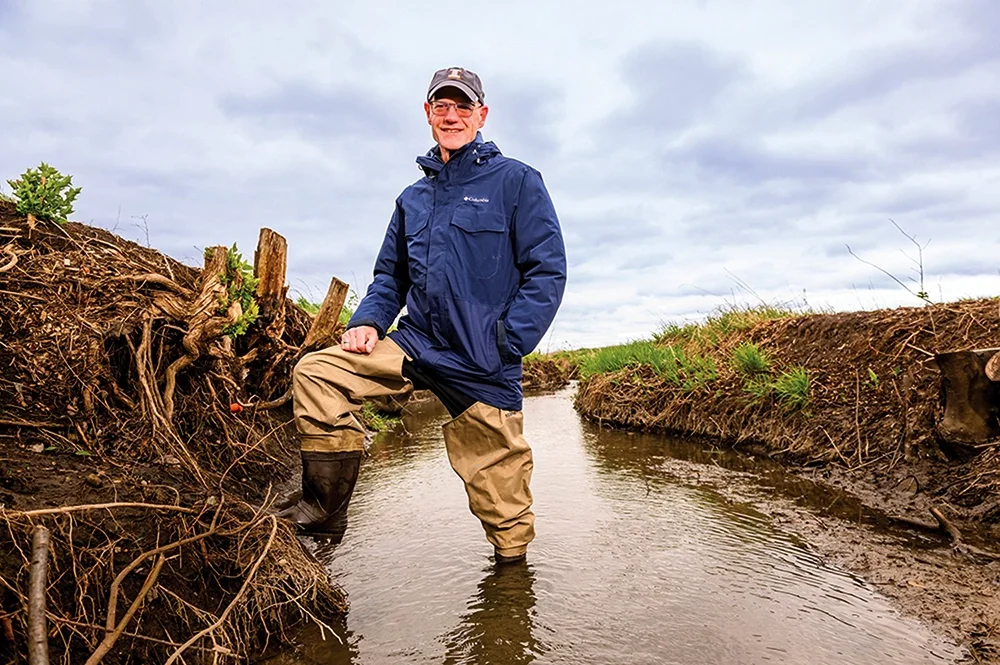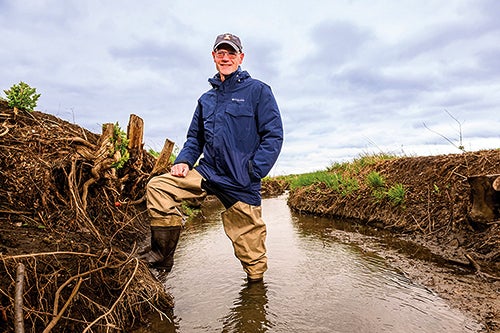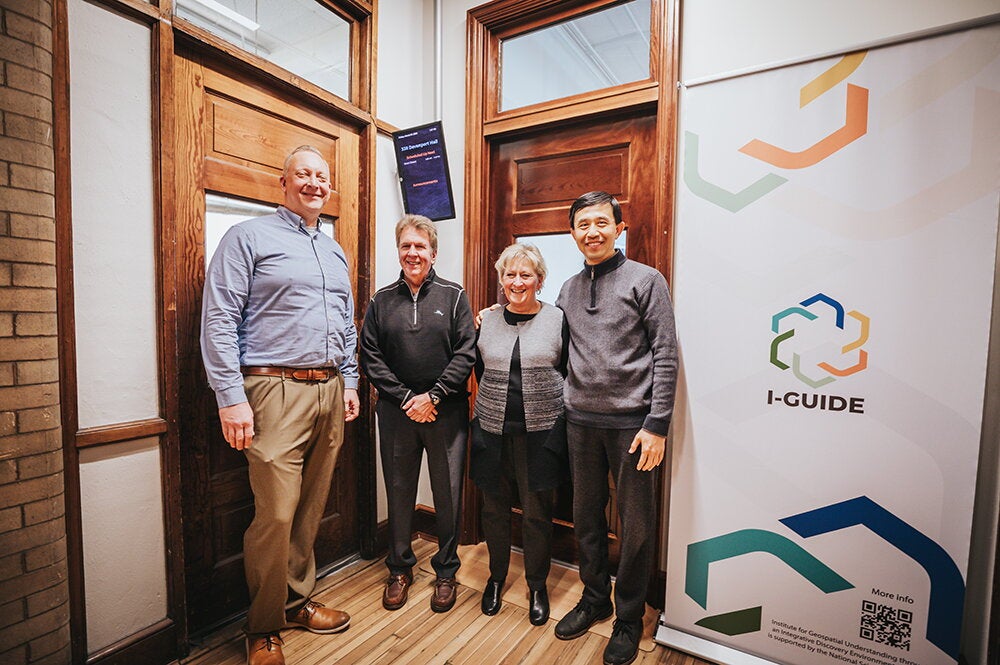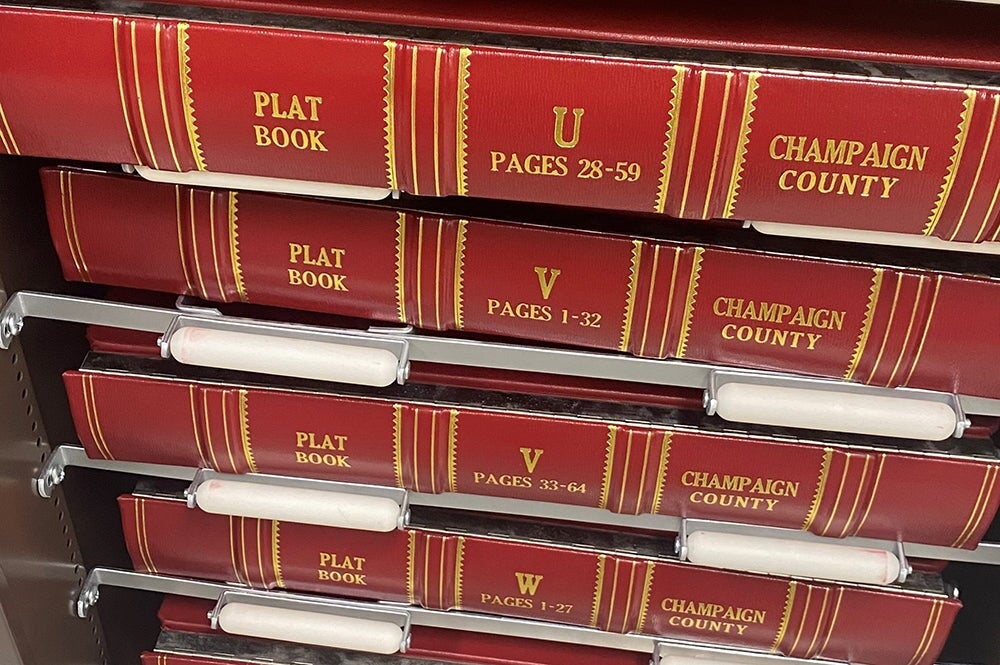

Scientific collaboration often begins with a simple conversation, an exchange of ideas that transcends borders. For Bruce Rhoads, a professor of geography and geographic information science and river dynamics expert, and Alexander Sukhodolov, a research group leader at Germany’s Leibniz Institute Freshwater Ecology and Inland Fisheries, that first conversation came in the form of an email nearly three decades ago. What started as an inquiry about river confluences grew into a lasting professional and personal connection—most recently leading to their coauthored study in Science examining the environmental consequences of the Kakhovka Dam’s destruction.
The science behind the study
The Kakhovka Dam’s destruction in June 2023 was a humanitarian crisis with ongoing environmental consequences. The paper in Science, which includes Sukhodolov and Rhoads among a team of co-authors, highlights an overlooked consequence of dam failure: the release of toxic materials buried in sediment.
The study found that pollutants had accumulated in the Kakhovka Reservoir over time, and these contaminants were exposed when the dam was destroyed. Without intervention, the toxins could spread through freshwater and marine ecosystems, affecting biodiversity and water quality. While rapid plant growth in the floodplain may help stabilize some of the disturbed sediment, addressing contamination remains a pressing concern. The findings also underscore the risks of global aging dams, even outside conflict zones.
“Many dams are many decades old. They are at risk of catastrophic failure in some cases,” Rhoads explained. “There can be substantial consequences, environmentally, economically, and in terms of loss of life.”
Rhoads’ role in the study was primarily in an editorial capacity, ensuring that the findings were communicated as clearly as possible. His river expertise and longstanding collaboration with Sukhodolov made him a natural fit to help shape the paper.
Their professional partnership has thrived partly because of their complementary approaches to science. “Bruce and I are working on the same topics but approaching them from different sides,” Sukhodolov explained, “I am more focused on the theoretical side, developing and testing theories, while Bruce is approaching from the empirical perspective.”

A partnership that spans decades
Long before this project, Rhoads and Sukhodolov’s partnership began with a shared interest in river confluences—a relatively underexplored topic in the 1990s.
“He contacted me through his institute, the Institute of Geology and Seismology in Moldova,” Rhoads recalled. “He had worked with another contact of mine from the same institute, who contacted me out of the blue soon after the fall of the Soviet Union.” Through that connection, Sukhodolov became aware of Rhoads’ work and reached out.
At the time, Rhoads had just received a National Science Foundation grant that allowed him to bring Sukhodolov to the United States. Their professional relationship grew, with the two writing scientific papers and Sukhodolov sending papers for Rhoads to review, particularly for language clarity.
“Over the years, we’ve just kept in touch. [Alex] would send me papers he was writing on his own work to read to help him with the English. We’ve developed a connection that allows me to interpret what he’s trying to say, even if it is not entirely clear,”
But their connection extends beyond research. When Sukhodolov visited, he spent time with Rhoads’ family, forming a bond beyond academia. On his first trip to the university, Sukhodolov asked Rhoads’ daughter to help him buy a Barbie doll for his own daughter—something he couldn’t get in Moldova. “When we went to the airport, his bag was overweight,” Rhoads said, “So he had to take things out, and he said, ‘We cannot take the Barbie doll out!’”
The value of international collaboration
According to Sukhodolov, truly innovative research often depends on international collaboration because many of these ideas are only being explored in a few places worldwide. “The fact that some specific directions and pioneering studies are done very rarely and seldom occur within a single country is the main driver of international cooperation,” he said. “It provides the way for people interested in similar things to exchange their experience and test their discoveries.”
For Rhoads, partnerships like the one he shares with Sukhodolov highlight the unifying nature of science. “I think science is an international language. It provides a common ground for communication about shared ideas globally. Everybody’s working with the same ideas.”
That shared commitment to advancing knowledge continues to drive their work together, which shows no signs of slowing down. They have plans to work together on projects well into the future, and one of Rhoads’ graduate students is now working on research that involves Sukhodolov.
Whether through shaping research on the environmental consequences of war or refining the nuances of a scientific paper, Rhoads and Sukhodolov exemplify how international collaboration can fuel discovery and lifelong friendships.
“That’s the great thing about collaboration,” said Rhoads. “You think you have a really good paper put together, and then somebody else can say, ‘What about this?’ And Alex is very good at that.”


